See Doug Kendig's slideshow with notes, Conifers of the Cascade-Siskiyou National Monument.
An eight-car caravan winds its way down Highway 66, weaving in and out of dappled shadows on a warm early-summer morning. Doug Kendig, former botanist with the BLM’s Northwest Forest Plan, is at the front, leading us deep into the peaceful Northeastern reaches of the Cascade-Siskiyou National Monument. We turn off the Greensprings Highway, following Jenny Creek North along Moon Prairie Road (40-3E-3.0), which turns into Jenny Creek Road. The drainage is deep and dramatic, steep velvet hills of conifers rising from the waterway. We ride above it all, appreciating the visible swath of conifer diversity around us.
We stop as the road crosses Jenny Creek over a concrete bridge, getting out of our cars to peer into the waterway. Doug helps us identify common high-elevation riparian trees: Sitka alder, red osier dogwood, ninebark, white oak, and willow. From our vantage point deep in the drainage, conifers surround us. We look up to see white and grand firs with their cones sticking straight up from the canopy branches into the blue sky, a direct contrast to Douglas fir (a false fir), whose mouse-tail cones droop downwards.
We park the cars a short ways beyond Jenny Creek, up the mountain at the intersection of 15.4 road and Jenny Creek Road. We’re almost at the ridgetop, and begin walking west along 15.4 road. At a bend in the road, Doug turns the group off course, into a small break in the trees. We meander through a maze of incense cedar and sugar pine trunks, picking our way through horsetail, starflowers, bracken fern, and Oregon grape which blanket the pine needle-strewn understory. We emerge into a riparian meadow that is saturated with standing water. Incense cedar snags ring the periphery of the meadow, a surefire sign that the soils around this area are wet most of the year- too wet for cedars to thrive! In this magical thicket, we find a Pacific yew tree, an understory conifer with an interesting, fleshy, berry-like cone. We don’t see cones, but are able to distinguish its short, dark needles and purple, peeling bark from an adjacent white fir.
At the end of the 15.4 road, we eat a delightful lunch in a sunny conifer grove, and then turn around to return to the cars once more. Before we are let off the hook, however, Doug makes sure that we know the difference between the many pine trees that surround us. Sugar pines have five needles to a bundle, as does Western white pine, but the sugar pine needles are shorter and cones grow off the tips of the branches. Ponderosa pines, on the other hand, have three needles to a bundle, puzzle-piece bark, and a beautiful candelabra shape.
Learning about conifers in the Monument with Doug Kendig proved to be a delightful way to spend a Saturday morning. We shared company with eager learners, the sun warming our backs, and we came away with new tree friends to greet next time we visit the Monument.
--Katie Boehnlein, Hike & Learn Coordinator
Notes from the June 10-11 Conifers Hike & Learn. Photos by Katie Boehnlein




